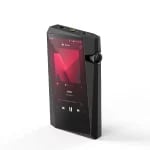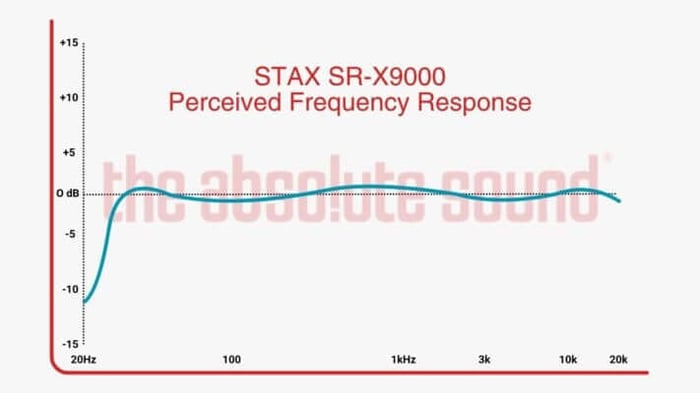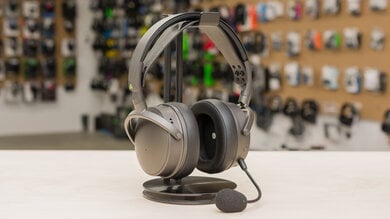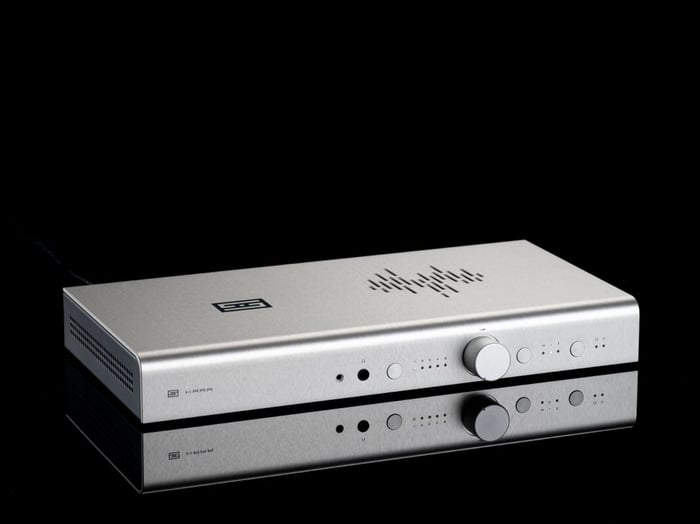
Schiit Audio Kara F Preamplifier, Gungnir 2 DAC, and Wotan Power Amplifier Review
Schiit Audio Kara F Preamplifier, Gungnir 2 DAC, and Wotan Power Amplifier Review
Explore the impressive synergy of Schiit Audio's Kara F preamplifier, Gungnir 2 DAC, and Wotan power amplifier in this detailed review.
A Trip Down Audio Memory Lane
Back in the 1960s, buying a stereo meant purchasing a complete system. My very first setup, bought from a New York City store in 1967, included a Garrard turntable, an H.H. Scott receiver, and a pair of EPI 100 loudspeakers—all bundled for $479. Fast forward to today, and Schiit Audio's GigaStack concept brings a similar vibe: a trio of components designed to work seamlessly together, though you still need to supply your own source and speakers.
The GigaStack consists of three main pieces: the Schiit Gungnir 2 DAC, the Kara F Preamplifier or Kara F+ preamplifier, and the Wotan Power Amplifier. For this review, I opted for the Kara F version.
Choosing components from a single manufacturer offers several key advantages. Since these products are designed and tested as a team, you’re less likely to face compatibility issues like mismatched impedance. Plus, troubleshooting is much easier when the manufacturer knows exactly how the system components are meant to gel.
The Kara F Preamplifier: Power and Precision
Priced at $799, the Kara F builds on the standard Kara preamplifier by adding the Forkbeard module, Schiit’s first dive into iOS app control. At first glance, the Kara looks similar to the Freya S, with added headphone support. Yet Schiit boldly claims that “the Kara kills the Freya S from all outputs, in all modes.”
So, what’s the magic? The Kara F boasts higher rail voltages—upgraded from ±17V to ±32V—and a beefy new 48V power supply to support those voltages, pushing its performance well beyond its sibling.
Operationally, the Kara F feels familiar if you've used the Freya S. I’ve owned two Freya S units myself, so this was a comfort zone. The Kara F offers two balanced and three single-ended inputs, plus one pair of balanced outputs and two single-ended outputs. It supports three modes: passive, active gain 1, and active gain 5. Most of the time, I stuck with passive mode—the 4-volt maximum signal from my reference DAC was so robust that even at loud volumes, the Kara F sat comfortably below unity gain.

The volume control is a standout feature—a 128-step relay attenuator controlled by remote—offering consistent channel tracking at all levels. I appreciate the audible clicks when changing volume; it’s like getting a little “click” confirmation that your command landed. Some find this distracting, but I find it reassuring.
Headphone lovers will appreciate the single-ended ¼” headphone jack, delivering up to 1 watt RMS into headphones from 32 to 300 ohms. The Kara F powered my demanding cans, including Beyer-Dynamic DT990 600-ohm headphones and Dan Clark Stealth headphones, with ease. In contrast, with sensitive in-ear monitors like the Empire Ears Zeus in-ear monitors, I had to dial down the volume significantly. At full volume, there was a faint hiss but nothing audible at typical listening levels.
The Forkbeard app extends the control experience, mirroring all physical remote functions and giving precise dB readouts for volume settings—a feature I quickly grew to love. Plus, haptic feedback gives a satisfying vibration when you adjust volume. The app also shows visual warnings when volume limits might be exceeded. No more guessing!
One ergonomic quirk I noticed: the Kara F’s IR eye has a limited vertical range, requiring you to hold the remote at shoulder height for consistent response. Thankfully, the app sidesteps this limitation entirely—no line-of-sight needed.
Of particular note: the Kara F switches inputs silently. Unlike many preamps that click or pause, this one changes inputs without a hint of sound, perfect for smooth A/B comparisons.
In terms of sound quality, the Kara F was transparent. It didn’t color the music or add distortion, delivering the musical information with clarity and precision. Compared to the Freya S, both sound spectacular, but the Kara F’s headphone output and app control make it the more versatile choice.
The Gungnir 2 DAC: A Refreshing Approach
At $1599, the Gungnir 2 DAC takes a different route from the typical offerings in its price range. Instead of using popular AKM, ESS, or Crystal DAC chips, Schiit employs a “multi-bit” design called “Multiform,” based on four Texas Instruments DAC8812C chips, with digital filtering handled by a SHARC DSP processor.
One cool perk is that the DAC/analog card is replaceable, allowing for future upgrades. Firmware updates come via the Forkbeard dongle.
Interestingly, the Gungnir 2 has two USB inputs: the Unison 384 input supports up to 384kHz/32-bit, while another input maxes out at 192kHz/32-bit. I tested both and found no significant sonic differences, so I stuck with the Unison 384 input.
A notable limitation is the lack of support for DSD and MQA formats. For audiophiles with a large DSD or MQA library, this might be a dealbreaker unless you’re using software like Roon to transcode files to PCM.
Operating the Gungnir 2 with the Forkbeard app was a breeze. It displays the bit rate, allows toggling non-oversampling, phase inversion, input switching, and muting—all from your device.
Doing a level-matched A/B comparison between the Gungnir 2 and my current reference DAC, the Gustard A-26, was challenging. Both DACs are priced similarly, and my tests revealed no audible differences. The soundstages, imaging precision, bass extension, and tonal characteristics were indistinguishable. Even blind tests with my wife switching DACs had me guessing incorrectly every time.

The Wotan Power Amplifier: Beastly Performance
The Wotan power amplifier, priced at $1999, is a heavyweight contender, tipping the scales at 54 pounds. It delivers 200 watts RMS into 8 ohms and doubles that into 4 ohms, perfect for demanding speakers.
Designed as a dual-mono differential amplifier, Schiit calls its circuit the High Power Nexus™. A neat feature is the universal feedback that you can toggle on or off, affecting gain (26dB or 32dB) and damping factor. With feedback, damping exceeds 50 into 8 ohms; without it, damping remains above 30.
The Wotan has two internal fans that spin briefly at startup but stay silent during normal operation, which was true in my setup with sensitive Spatial Audio X-2 loudspeakers. While a very low hum is present inside the chassis, it’s inaudible at the listening position. Speaker outputs are utterly silent, even at maximum volume and with ears close to the drivers.
For those wanting a zero-feedback amplifier, Schiit provides a front panel button and app control to switch to that mode. I tried it but quickly reverted to feedback-on mode, as the zero-feedback sounded a bit uncontrolled for my tastes.
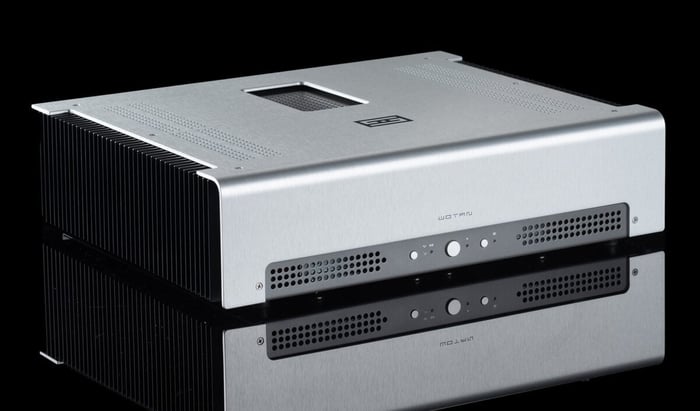
GigaStack: Putting It All Together
Setting up the GigaStack was straightforward. I replaced one DAC connected to my Freya S with the Gungnir 2, then swapped out the Freya S for the Kara F, and lastly exchanged one of my amplifiers for the Wotan. This setup allowed me to easily switch among my various amplifiers for comparison.
I tend to listen first for any degradation when adding new gear since my system has been finely tuned over the years. If I hear no negative changes, I consider that a win.
The GigaStack performed flawlessly. Once accustomed to the Forkbeard app, I preferred it over physical remotes—no more fussing with remote placement or angles.
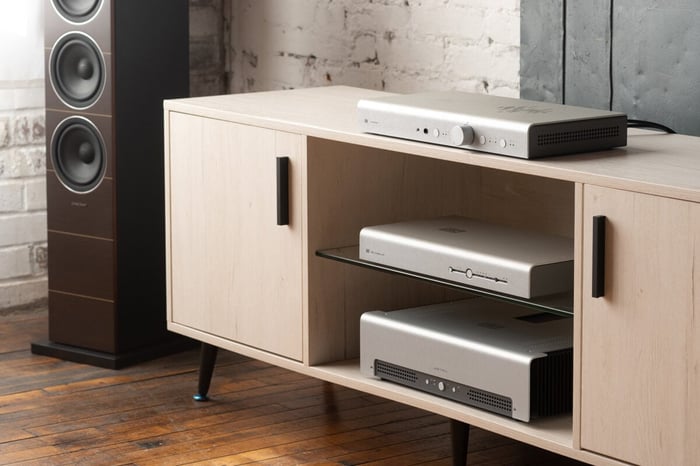
The Sound of the GigaStack
The GigaStack delivers the hallmark of top-tier audio: transparency. It sounds like the recording itself, nothing more, nothing less. Mono tracks remain focused, while live concert recordings bloom with a palpable three-dimensional soundstage.
On a field recording of Chris Eldridge and Bryan Sutton playing “Church Street Blues,” subtle background details like a distant river and workshop tapping were audible. A classical recording of the Boulder Philharmonic’s Brahms Requiem revealed precise spatial cues—the chorus clearly positioned above and behind the orchestra, along with the conductor’s breath.
“Only God can forgive.” – J. Gordon Holt
Summary and Pricing
I’m not one for flashy, gold-plated audio gear. I value substance over shine, and Schiit’s Kara F and Gungnir 2 reflect that philosophy. They sport a clean, distinctive design that’s far from plain but avoids overly flashy aesthetics.
Adjusted for inflation, my first stereo system from 1967 would cost about $4593 today, slightly more than the GigaStack’s $4247 price. Comparing then and now is like comparing a 1970 Saab to a modern hybrid: the value and performance leap forward is enormous.
Schiit delivers high-performance, well-engineered audio components at prices that make sense for serious music lovers.
Tech Specs & Pricing:
Kara F Solid-State Preamplifier
Inputs: 2 balanced XLR, 3 single-ended RCA
Outputs: 1 balanced XLR, 2 single-ended RCA
Dimensions: 16" x 8" x 2"
Weight: 12 lbs
Price: $799
Gungnir 2 DAC
Inputs: Coaxial RCA SPDIF, Optical SPDIF, USB
Supported PCM Formats: up to 384kHz/32-bit
Outputs: Balanced and unbalanced fixed outputs
Dimensions: 16" x 8" x 2"
Weight: 12 lbs
Price: $1599
Wotan Solid-State Power Amplifier
Output Power: 200W/8 ohms, 400W/4 ohms
Inputs: Balanced XLR, single-ended RCA
Input Impedance: 47k ohms
Dimensions: 16" x 13" x 3.875"
Weight: 54 lbs
Price: $1999
Complete System Price: $4247
Frequently Asked Questions
- What makes the Kara F stand out from the Freya S?
The Kara F features higher rail voltages, an upgraded power supply, headphone output, and app control via the Forkbeard module for enhanced functionality. - Does the Gungnir 2 support DSD or MQA formats?
No, the Gungnir 2 does not support DSD or MQA. Users can transcode these formats to PCM through software like Roon. - Can the Wotan amplifier operate without feedback?
Yes, it has a switchable feedback mode, but many users, including this reviewer, prefer the smoother control with feedback enabled. - How easy is it to switch inputs on the Kara F?
The Kara F switches inputs silently without clicks or pauses, ideal for quick A/B testing or multiple source setups. - Is the Forkbeard app better than the physical remote?
Many users find the app more convenient, offering precise volume readouts, haptic feedback, and no line-of-sight limitations.
Ready to enhance your music experience? Shop your favorite audio album cover posters at our store Architeg Prints to create the perfect vibe for your listening room!
 | DISCOUNTGET 30% OFF*Use code on your next order:
|
* This post may contain affiliate links, meaning we earn a commission if you make a purchase through these links, at no additional cost to you.



